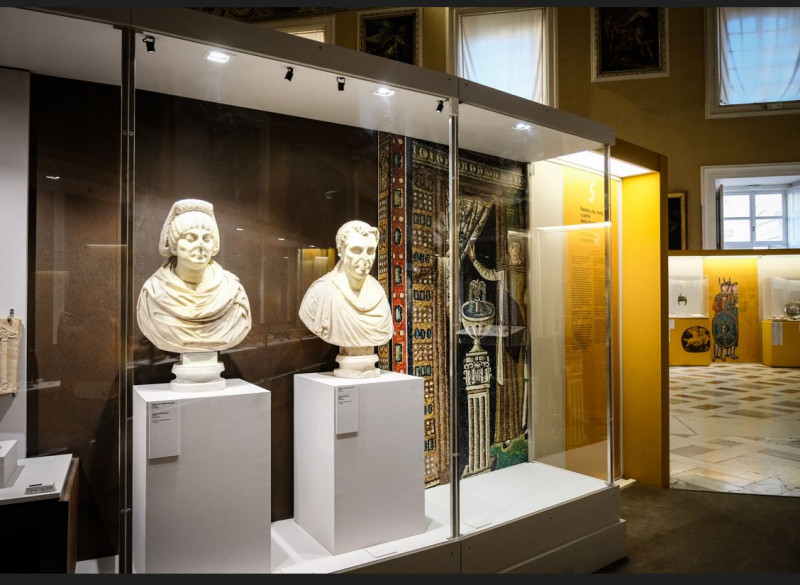An exhibition on Byzantine Culture is moving to Turin, which will run from April 27 to August 28
More than 150 objects from Archaeological Museums and Ephorates of Antiquities of Greece, continue their journey to Italy where – after Naples, they will stay for at least four months in Turin.
This is the exhibition entitled “Byzantines. Places, symbols and communities of a thousand-year empire” (Bizantini. Luoghi, simboli e comunità di un impero millenario), which, after the great success at the Archaeological Museum of Naples, is transferred to the Museo Civico d’Arte Antica – Palazzo Madama in Turin, a historic building that is a UNESCO World Heritage Site.
The exhibition is an ambitious undertaking that deals with and illustrates, through its multitude of exhibits from Italy and Greece, the history and culture of Byzantium from its foundation to the Fall, focusing on the people of the Empire, the Byzantines.
The exhibition also takes part in Archaeological Museum of Thessaloniki with exhibits located either in its permanent collections or in its warehouses. “The exhibits we are sending are not many in number, but they have a very important place in the museological rationale of the exhibition,” archaeologist Meropi Ziogana tells the Athenian/Macedonian News Agency. As he explains, the reasoning in this case is updated in relation to the Naples exhibition and will be enriched with works from the numismatic collections of the Municipal Museum of Ancient Art of Turin. “It will be given a special weight and will try to deepen the connection of the city and the representatives of the House of Savoy, Piedmont and the collections housed in the Palazzo Madama, with the Byzantine Empire. That is why it is enriched with some objects from the collections of the museum where it is hosted”, points out Ms. Ziogana.
As for Greece’s participation in this specific exhibition, the archaeologist emphasizes that it is very important that our exhibits go abroad and be exhibited in other museums, for two main reasons. One is for the world to come into contact with them and the second is for the objects themselves to gain new experiences. “Archaeological objects anyway have many stories to tell. But when they come into conversation with other objects and…open a dialogue with them, different stories are “told”. That’s why it’s important for them to travel,” emphasizes the archaeologist. He also adds that in this way people are motivated to come and visit our country and our exhibitions, which has been proven in the past. “We have noticed that when we participate in exhibitions abroad, then there is a large flow of tourists and visitors from the countries and cities where exhibitions with objects from the collections of Greece were hosted, to the cities where the exhibits come from,” he said characteristically.
Source :Skai
I am Frederick Tuttle, who works in 247 News Agency as an author and mostly cover entertainment news. I have worked in this industry for 10 years and have gained a lot of experience. I am a very hard worker and always strive to get the best out of my work. I am also very passionate about my work and always try to keep up with the latest news and trends.











